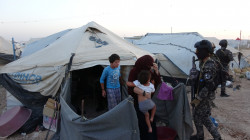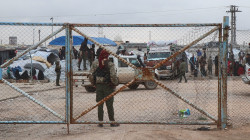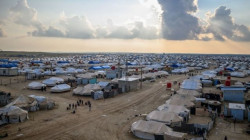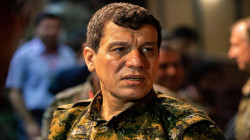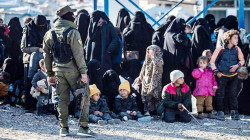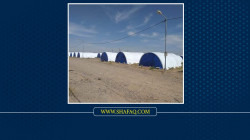Report: Murders surge in al-Hol camp stalked by Isis
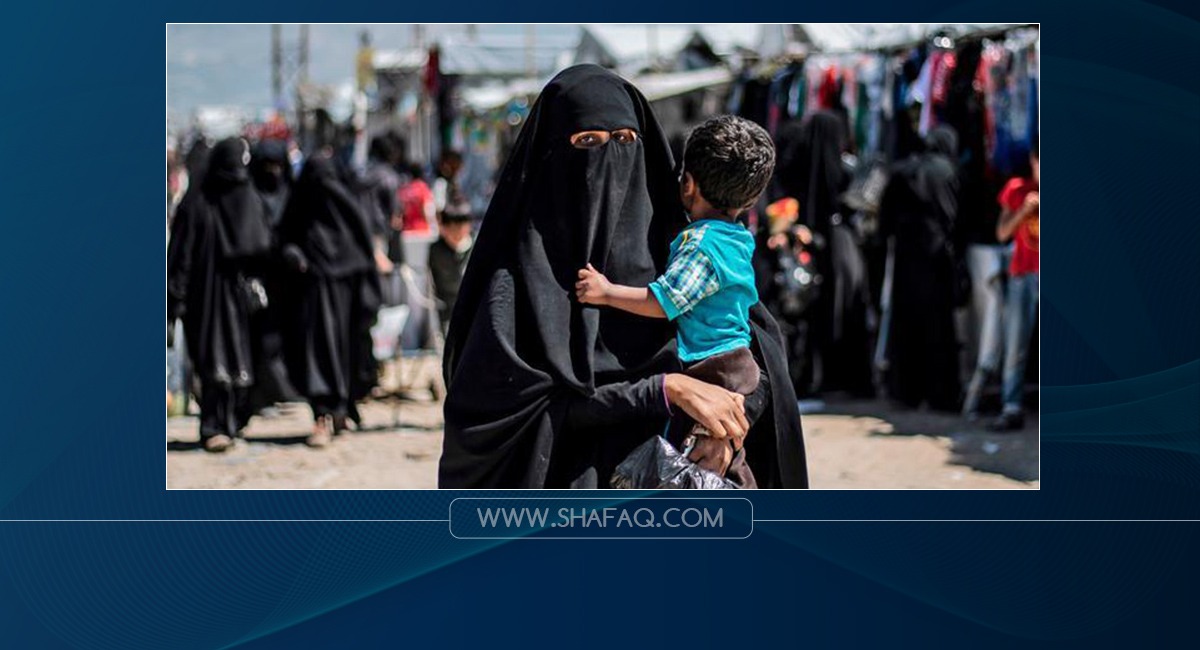
Shafaq News / The gunman arrived on a Friday afternoon and shot dead two of Sara’s relatives in broad daylight, as crowds returned from the mosque in a refugee camp in northeast Syria.
With Leila, the attackers came in the middle of the night. They murdered her husband lying in the tent alongside her as she, heavily pregnant, tried to sleep in the heat.
The relatives of these Syrian women are unconnected but they all live in the Kurdish-run al-Hol refugee camp, where crime, violence, and deaths are soaring as officials struggle to contain what they say is the growing influence of the Islamic State (Isis) and factions within the facility.
The now infamous tent city is home to nearly 60,000 Syrians and foreigners, including family members of Isis fighters, adherents of the group, or people who fled the collapse of the caliphate almost three years ago.
Violence there has reached unprecedented levels: the loved ones of Sara and Leila are among at least 81 people camp officials say have been killed to date in 2021.
In fact, international rights groups, whose own staffers and centres have been targeted, say al-Hol has been bloodier this year in terms of murders per capita than Caracas in Venezuela, the world’s deadliest capital.
The surge in assaults, attempted beheadings, extortion, theft, arson, and murders has prompted the Kurdish authorities to call for a major but divisive security restructure, and warn the international community that they need help to stop further bloodshed.
“Anyone perceived to be working with camp administration is at risk,” says Sara, whose name has been changed for her safety. “My father-in-law was murdered because he was part of an al-Hol council,” she adds, explaining that she knows 13 Syrians who have been killed this year alone.
The exact motives for the murders are unknown. Camp officials and some residents believe Isis militants and their supporters are behind the majority of the killings and have claimed al-Hol is part of the group’s efforts to recruit, generate income, and even plan attacks abroad after their caliphate was crushed in 2019.
Sara isn’t sure but says the murders of her father-in-law and brother-in-law were part of a slew of attacks on camp inhabitants accused of working with the Kurdish-led authorities.
There is a pattern: among the recent murder victims in al-Hol are policemen, family members of charity workers operating in the camp, and locally appointed camp community leaders.
“When the camp’s guards caught the attacker they found a message on his mobile that read ‘the operation is done and was successful’. Other names of people the council were mentioned as targets,” Sara says.
Leila’s husband, who is from Idlib, scraped a living by using a smuggled laptop to burn cartoons onto DVDs that he sold in the camp. While she does not know why he was murdered in May, the fact he ran a business suggests extortion as the motive.
“They shot him in the head without saying a word,” the mother-of-four says, her voice wobbling.
“I am so scared and alone. The situation is horrendous, we are all frightened,” adds Leila, whose name has been changed.
he surge in assaults, attempted beheadings, extortion, theft, arson, and murders has prompted the Kurdish authorities to call for a major but divisive security restructure, and warn the international community that they need help to stop further bloodshed.
“Anyone perceived to be working with camp administration is at risk,” says Sara, whose name has been changed for her safety. “My father-in-law was murdered because he was part of an al-Hol council,” she adds, explaining that she knows 13 Syrians who have been killed this year alone.
The exact motives for the murders are unknown. Camp officials and some residents believe Isis militants and their supporters are behind the majority of the killings and have claimed al-Hol is part of the group’s efforts to recruit, generate income, and even plan attacks abroad after their caliphate was crushed in 2019.
Sara isn’t sure but says the murders of her father-in-law and brother-in-law were part of a slew of attacks on camp inhabitants accused of working with the Kurdish-led authorities.
There is a pattern: among the recent murder victims in al-Hol are policemen, family members of charity workers operating in the camp, and locally appointed camp community leaders.
“When the camp’s guards caught the attacker they found a message on his mobile that read ‘the operation is done and was successful’. Other names of people the council were mentioned as targets,” Sara says.
Leila’s husband, who is from Idlib, scraped a living by using a smuggled laptop to burn cartoons onto DVDs that he sold in the camp. While she does not know why he was murdered in May, the fact he ran a business suggests extortion as the motive.
“They shot him in the head without saying a word,” the mother-of-four says, her voice wobbling.
“I am so scared and alone. The situation is horrendous, we are all frightened,” adds Leila, whose name has been changed.
Rights groups warn that al-Hol and the terrible conditions in the camp are not sustainable
(Bel Trew)
Al-Hol is not a welcoming place.
The peaks of the tents emerge through the haze like scales along the back of the horizon of this lonely patch of desert in Syria’s Al-Hasakah Governorate, a region bordering Iraq.
Security forces stand guard along the concentric snarls of barbed wire. Inside the camp, black-clad residents move through the maze in the scorching heat. The air crackles with tension. In an annexe reserved for third-country nationals, some children of foreign Isis families throw stones at visitors. In the main part of the camp, outsiders are watched with distrust.
In many ways, the story of this camp reflects the violent history of the region. It was first established in 1991 for Iraqi refugees in the Gulf War, and was later reopened for those fleeing the 2003 US-led invasion of Iraq.
As war erupted again and Isis swept through territory, a fresh wave of Iraqi refugees came to the camp between 2016 and 2017, and it also became a transit point for Syrians forced to flee their homes by the conflict.
But at the start of 2019 everything changed. As the caliphate collapsed in the space of a few months, and those living within under Isis’s rule fled the US-backed war to destroy the group, the camp’s population increased sixfold. It reached nearly twice its maximum capacity.
The overflowing camp was eventually split in two: foreigners – including Brits, Americans and Russians – were placed in a section called the annexe. Syrian and Iraqis – some of them Isis supporters, others normal civilians who had been uprooted – remained in the larger section.
Today, most of the Europeans, including all known British citizens such as Shamima Begum, have been moved to a second camp – which is smaller but more secure – called Roj. However, more than 8,000 people from nations as far away as Tajikistan and Russia remain in the annexe. While thousands of Syrians have returned home in deals brokered with local tribal leaders, nearly 20,000 are still in the main part of the camp alongside nearly 30,000 Iraqis.
Countries have been reluctant to repatriate their citizens while many Syrians are stuck. And so, over the years, living conditions have deteriorated and desperation has taken root.
Inevitably, violence has soared.
Source: The Independent
